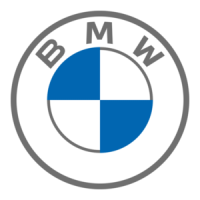
Do you have a question about the BMW Mountain Bike Enduro and is the answer not in the manual?
Details on validating warranty and filling out the handover report for identification.
Instructions for sending the original handover report for registration.
Guidance on the intended purpose and limitations of the bicycle.
Detailed information on how bicycle brakes function and their maintenance.
Explanation of bicycle gears, how they work, and operation.
Instructions for adjusting saddle and handlebar for optimal fit and comfort.
Detailed instructions on correctly using quick-release and thru axle systems.
Information on tyre types, rim tape, valves, and inflation pressure.
Detailed information on how bicycle brakes function and their maintenance.
Information on legal requirements and equipment for road use.
Detailed information on how bicycle brakes function and their maintenance.
Information on tyre types, rim tape, valves, and inflation pressure.
Instructions for adjusting saddle and handlebar for optimal fit and comfort.
Guidance on checking, adjusting, and maintaining the bicycle's headset.
Instructions for using and securely fastening quick-release mechanisms on wheels and seat post.
Guidance on ensuring components, especially wheels, are securely fastened.
Information on mounting thru axle wheels, including special tools and torque requirements.
Overview of the different types of BMW bicycles and their intended uses.
Details on the intended use and limitations of Cruise Bikes.
Details on the intended use and limitations of Touring Bikes.
Guidance on riding safely on public roads, including roadworthiness and traffic rules.
General principles of bicycle brakes, their function, and handling emergency braking.
Explanation of brake pad function, wear, and maintenance for effective braking.
Procedure for checking V-brake pads alignment, thickness, and pad setting.
Information on the function and purpose of power modulators in V-brakes.
Steps for checking and readjusting hand-operated brakes, including cable tension.
Explanation of bicycle gears, their function, and how they adjust to terrain and speed.
Information on the bottom bracket and crankset, including maintenance and checking for play.
How derailleur gears work and how to operate them on different bike types.
Instructions for adjusting the rear derailleur, including cable tension and limit stops.
How multi-speed hubs work and how to use their shifters, including SRAM and Shimano systems.
Proper lubrication and cleaning of the bicycle chain for optimal performance and longevity.
How to check for chain wear and the importance of timely replacement.
Details on tyre types, tubes, rim tape, valves, and correct inflation pressure.
Step-by-step guide for removing wheels from mountain, cruise, and touring bikes.
How to check the headset for play and ensure smooth rotation.
Definitions of suspension terms like spring rate, sag, lockout, and damping.
How to adjust the spring rate of suspension forks based on rider weight and terrain.
How to adjust saddle position to compensate for rear shock sag and improve comfort.
How to adjust rear shock spring rate based on rider weight and intended use.
Details on hub dynamos, their function, and types.
How to set the correct saddle height for maximum pedalling comfort and efficiency.
Steps for adjusting saddle position and tilt, ensuring it remains horizontal.
Adjusting brake lever reach for riders with smaller hands for better grip.
Adjusting handlebar tilt for relaxed wrist posture and positioning bar ends.
Ways of carrying baggage on a bicycle, including rucksacks, pannier racks, and bags.
Details on child carriers, their fitting, load limits, and safety considerations.
Guidance on fitting accessories like bells, horns, and lights, and checking compatibility.
Information on fitting mudguards, including removable and firmly attached types.
Guidance on selecting and wearing cycling helmets correctly.
